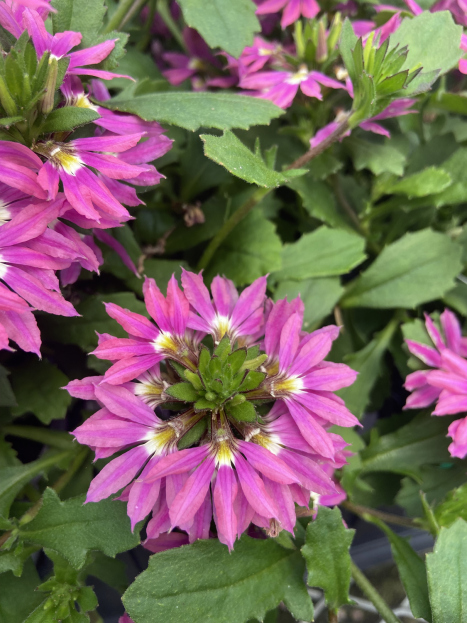
Scaevola, commonly known as Fan Flower, is a sun-loving, trailing plant that brings a burst of color and charm to garden beds, hanging baskets, and patio containers. Native to Australia, Scaevola is celebrated for its fan-shaped, lavender-blue flowers that bloom continuously through the heat of summer—all while requiring minimal maintenance.
If you're looking for a hardy, drought-tolerant bloomer that thrives in full sun and doesn’t mind skipping a watering or two, Scaevola is the perfect choice. Here’s how to keep it thriving:
Scaevola loves the sunshine. Plant it in full sun, where it will receive at least 6–8 hours of direct light daily. While it can survive in partial sun, it won’t bloom as vigorously and may become leggy.
This makes it ideal for sunny balconies, window boxes, and garden edges where other plants might wilt under the heat.
Once established, Scaevola is wonderfully drought-tolerant. Water when the top few inches of soil are dry—generally once or twice a week, depending on the temperature. In hot summer weather, you may need to water more frequently, especially if it’s in a hanging basket or smaller container.
Avoid overwatering; soggy soil can lead to root rot. Scaevola prefers to dry out slightly between waterings.
Use a well-draining potting mix. Scaevola doesn’t like wet feet, so if planting in containers, ensure there are ample drainage holes. A sandy or loamy mix with added perlite works well.
In the garden, plant it in raised beds or amend heavy soils with compost or grit to improve drainage.
Feed Scaevola with a balanced, slow-release fertilizer at the time of planting. For continued blooming, you can supplement with a liquid fertilizer every 4–6 weeks during the growing season (spring to early fall).
Too much nitrogen can lead to more foliage and fewer flowers, so use a formula that promotes blooming.
One of Scaevola’s best traits is its self-cleaning nature—there’s no need to deadhead! Old blooms drop off on their own, and new ones take their place.
To encourage bushier growth or to tidy up a leggy plant, give it a light trim or pinch back the tips in early summer.
Scaevola thrives in warm weather and doesn’t handle frost. It grows as a perennial in zones 9–11 and as an annual in cooler climates. In northern areas, treat it like a summer annual and plant after the danger of frost has passed.
It performs best in temperatures between 65–85°F (18–29°C).
Scaevola is impressively pest- and disease-resistant. It rarely has issues with insects or fungi, especially when grown in well-draining soil with good airflow. Root rot is the most common problem—almost always due to overwatering or poor drainage.
The Scaevola is considered pet-safe. While they are not toxic to dogs or cats, excessive consumption can cause mild gastrointestinal upset like vomiting or diarrhea. Therefore, it's best to monitor your pets around the plants to prevent them from eating too much
Scaevola can be propagated from stem cuttings taken in spring or early summer. Dip the cut end in rooting hormone and place it in moist potting mix or water until roots develop.